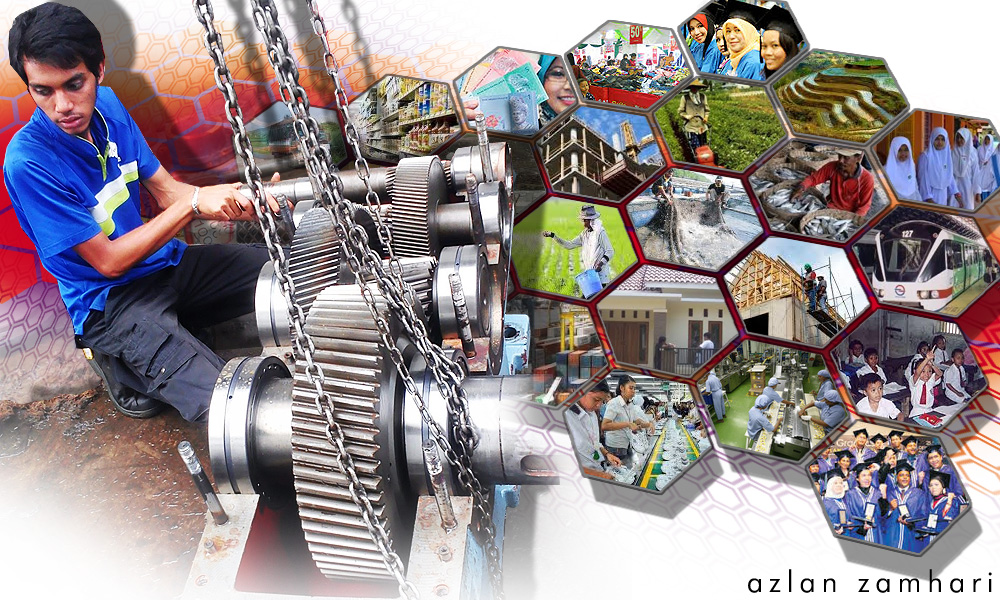A flexible working environment raises productivity among small and medium enterprises (SMEs) and alters consumer spending geographically as people spend more near their homes, which helps small businesses and diversifies economic growth.
Design Thinker and Researcher Jesrina Ann said that based on research among SMEs in Kuala Lumpur, a flexible working environment has proven to increase productivity as it reduces absenteeism, attrition and the use of sick leave.
Higher productivity causes savings in marginal cost, which could then be invested into research and development which in turn would enhance the quality of goods and services, she said on Bernama TV's "The Brief" talk show yesterday.
Jesrina said flexible hours lead to a change in consumer spending, whereby people begin to spend more time closer to the home, creating demand for goods and services from local small businesses, and this geographically decentralises spending and diversifies economic growth.
She said her research was done through a design thinking ideology that empathised with employees and identified challenges of the return-to-office (RTO) settings and post-work-from-home (WFH) situation - which took place during the Covid-19 lockdowns had a mixed bag of advantages and disadvantages.
To questions posed by host Gerard Ratnam, she said among the challenges of RTO was the lack of work boundaries, which led to a deterioration in work/life balance and mental and physical fatigue as employees were now required to travel back to the office.

Managers also found it hard to manage the efficacy of workflow, as some employees were working from home and others at the office, while there was a clear lack in staff morale, which diminishes productivity.
Jesrina said some of the solutions by design thinking ideology for SMEs that worked very well were a combination of flexible working hours, alongside the usage of apps such as Waze or Google Maps, which significantly saved travel time to and from the office.
"This is only attainable if the business owners are willing to allow their employees to clock in or out, at a flexible timing."
To manage productivity and workflow, "we tested the four-day work in the office and one-day WFH idea, which worked very well, with the usage of apps such as Evernote, Toggl Plan or Todoist," as these apps help with planning, checklists, reminders and even the tracking of projects, she added.
The idea of encouraging voicing out gratitude among teammates, rather than thinking of organisations as transactional places where one was supposed to be professional, also boosted the morale and well-being of employees.
Among the disadvantages…
Among the disadvantages was that a flexible working environment demonstrated a lack in knowledge flow among employees, especially when there was a need to acquire skills through learning-by-doing.
In this case, long-term productivity might suffer because when people share the same workspace, they tend to learn faster and better.
Jesrina also said employers should take cognisance of the fact that a flexible working environment was a precursor to workforce agility.
To the millennial generation, offering choices in the workplace was more important than just salary itself while Gen Xers and baby boomers out there don’t mind the flexibility either.
"But it is important for employers to realise that millennials and soon, Gen Z, will be looking for workplace agility more than the incentives currently offered," she said.

Companies that were able to remain agile in these changing circumstances might see an increase in productivity, improvements in profits, and the creation of competitive advantages while being able to attract and retain top talents.
However, she lamented that in Malaysia, there was still a disconnect between employers and management and their employees as to what was required for the flexible working environment, saying there was a lack of clarity in Malaysia.
Employers should understand the different types of flexible working environments, whereby there was hybrid work – where some employees would work at the office and some from home, depending on their preference.
Then there was the four-day work week, also known as the compressed work week, and also flextime where employees were given the freedom to select when their working day begins and ends, as long as they work their contracted number of hours.
"The key to making this work is for employers and employees to find which work environment will provide sufficient flexibility to keep staff happy, without suffering a negative impact on productivity or work quality," Jesrina added.
- Bernama



No comments:
Post a Comment
Note: Only a member of this blog may post a comment.